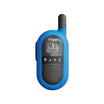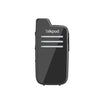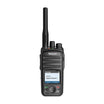In today's era, the robustness of two-way radios has significantly advanced, extending far beyond the marine radios that were historically the only waterproof options available. The evolution of radio technology has made waterproofing and dust protection standard features in both commercial and amateur radio equipment.
The term "IP," which stands for Ingress Protection, plays a crucial role in defining the level of protection a device offers against the intrusion of solid objects, dust, accidental contact, and water. The IP rating system, which comprises two numbers, measures this protection. The first digit indicates the level of protection against solid particles, while the second digit represents the protection level against liquids. This standardized rating system helps users understand the durability and resistance of their devices under various environmental conditions.
Understanding the specific IP ratings is essential for selecting the right radio equipment for your needs, whether it's for commercial use, hobbyist activities, or emergency situations. For example, devices with a rating of IPX5 are protected against low-pressure water jets from any direction, whereas those rated IP65 are dust-tight and can also withstand water jets. More advanced protections, such as IP67 or IP68, indicate that a device can withstand temporary or even prolonged immersion in water, making them ideal for more demanding applications.
With the progression of technology, it's now common to find two-way radios equipped with comprehensive protection levels to ensure reliability and longevity, even in the harshest environments. This advancement significantly enhances the versatility and applicability of radio equipment across a wide range of activities and industries, from construction sites and factories to outdoor adventures and maritime operations.
|
The various IP ratings are defined below. IP Standards for Protection against Liquids IP Standards for Protection against Liquids
IP Standards for Protection against Objects
|









































